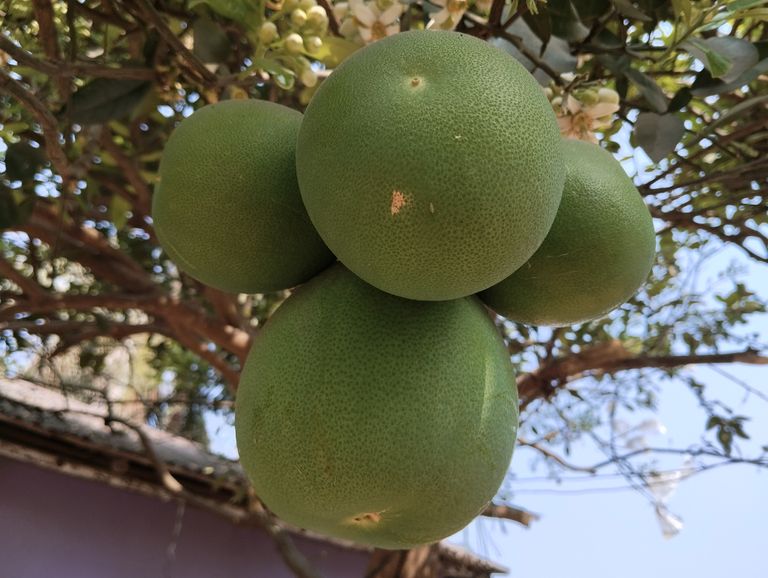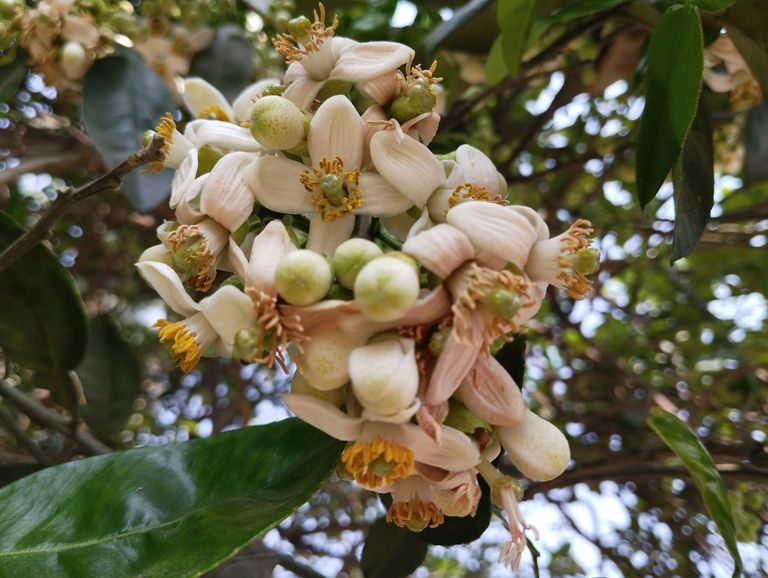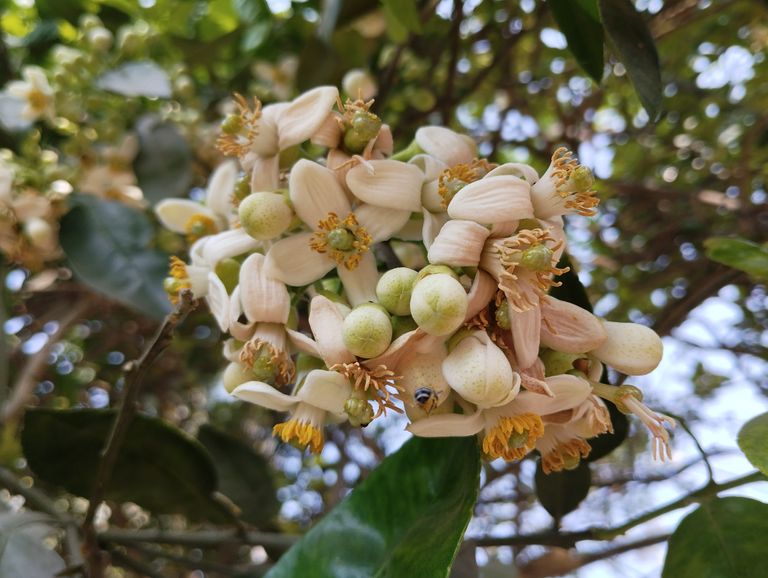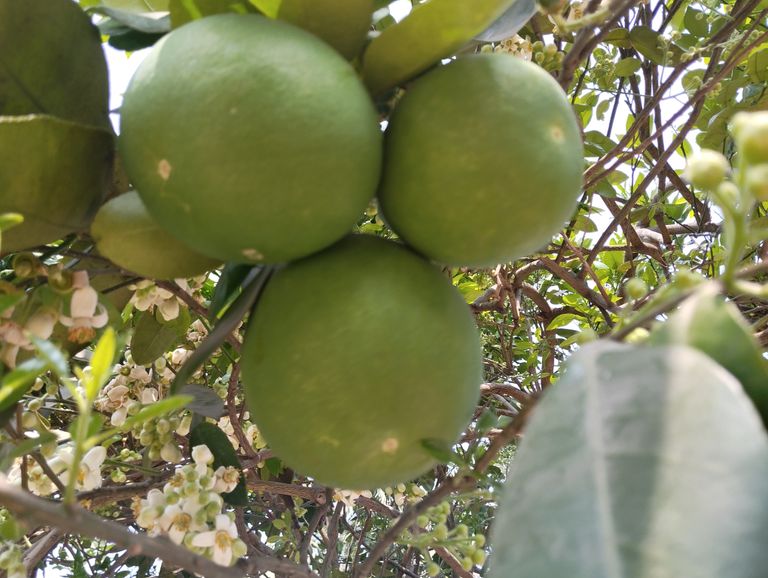
Health Benefits of Eating Pomelo Jambura.
Pomelo, also known as Jambura in Bangladesh, is a large citrus fruit packed with essential nutrients. It is often referred to as the ancestor of the grapefruit and is widely consumed in tropical and subtropical regions. With its refreshing taste and numerous health benefits, pomelo has gained popularity among health-conscious individuals. In this blog, we will explore the various health benefits of eating pomelo and why you should include it in your diet.
- Rich in Vitamin C
Pomelo is an excellent source of vitamin C, which plays a crucial role in boosting the immune system. A single serving of pomelo can provide more than the daily recommended intake of vitamin C, helping the body fight infections, colds, and flu. Vitamin C is also an antioxidant that reduces oxidative stress and supports overall health.
- Supports Digestive Health
Pomelo contains a good amount of dietary fiber, which is essential for proper digestion. Fiber helps regulate bowel movements, preventing constipation and promoting a healthy gut. The natural fiber content in pomelo also supports the growth of beneficial gut bacteria, improving overall digestive function.
- Aids in Weight Loss
If you are trying to lose weight, pomelo can be a great addition to your diet. It is low in calories but high in fiber, which helps keep you full for a longer time. The fiber in pomelo slows down digestion and reduces unnecessary food cravings, making it easier to control calorie intake. Additionally, pomelo has enzymes that aid in fat burning and metabolism.
- Improves Heart Health
Eating pomelo regularly can benefit your heart health. It contains antioxidants like flavonoids and vitamin C, which help reduce cholesterol levels and prevent the buildup of plaque in the arteries. Pomelo also contains potassium, which helps regulate blood pressure by balancing sodium levels in the body. This reduces the risk of hypertension, stroke, and other cardiovascular diseases.
- Controls Blood Sugar Levels
Pomelo has a low glycemic index, which means it does not cause a rapid spike in blood sugar levels. The fiber content helps slow down the absorption of sugar into the bloodstream, making it a suitable fruit for people with diabetes. However, diabetics should consume pomelo in moderation to avoid any potential blood sugar fluctuations.
- Boosts Skin Health
The high vitamin C content in pomelo promotes healthy and glowing skin. Vitamin C helps in collagen production, which keeps the skin firm and youthful. The antioxidants in pomelo protect the skin from damage caused by free radicals, reducing the risk of premature aging, wrinkles, and dark spots. Regular consumption of pomelo can help achieve a radiant complexion.
- Strengthens the Immune System
Pomelo is loaded with antioxidants and essential nutrients that strengthen the immune system. The presence of vitamin C, along with other vitamins and minerals, helps the body fight against infections and diseases. Regular consumption of pomelo can enhance the body's natural defense mechanism, keeping you healthy and active.
- Promotes Hydration
Since pomelo is composed mainly of water, it helps keep the body hydrated. Staying hydrated is essential for maintaining energy levels, improving digestion, and supporting overall bodily functions. Eating pomelo can be a delicious way to stay refreshed, especially in hot weather.
- Reduces Inflammation
Chronic inflammation is linked to various health issues, including arthritis, heart disease, and obesity. Pomelo contains bioactive compounds with anti-inflammatory properties that help reduce inflammation in the body. The antioxidants in pomelo also help protect the body from oxidative stress, which can contribute to inflammation.
- Supports Kidney Health
Pomelo is rich in potassium, which plays a key role in maintaining kidney health. Potassium helps in balancing fluids in the body and reducing the risk of kidney stones. However, individuals with kidney disease should consult a doctor before consuming pomelo, as excessive potassium intake may not be suitable for them.
- Enhances Bone Health
Pomelo contains essential minerals such as calcium and phosphorus, which contribute to bone strength and density. Regular consumption of pomelo can help prevent osteoporosis and improve overall bone health, especially in older adults.
- Detoxifies the Body
Pomelo acts as a natural detoxifier by flushing out toxins from the body. It helps cleanse the liver and kidneys, improving their overall function. The high water content in pomelo also aids in removing waste and keeping the body free from harmful substances.
How to Eat Pomelo
Pomelo can be enjoyed in various ways:
Eat it fresh by peeling the skin and separating the segments.
Add pomelo pieces to fruit salads for a refreshing taste.
Make fresh pomelo juice for a nutritious drink.
Use pomelo in smoothies, desserts, or jams.
Pomelo is not only delicious but also packed with numerous health benefits. From boosting immunity to improving heart health, digestion, and skin glow, this tropical fruit is a powerhouse of nutrients. Adding pomelo to your diet can be a simple yet effective way to enhance overall well-being. So, the next time you come across a pomelo, make sure to enjoy its refreshing taste and health-boosting properties.Would you like more details on any of these benefits? Let me know.

Diseases of Pomelo (Citrus grandis) and Their Management
Pomelo (Citrus grandis), known as "Jambura" in Bangladesh, is a popular citrus fruit cultivated in many tropical and subtropical regions. It is valued for its juicy, slightly sweet, and tangy taste, as well as its health benefits. However, like other citrus fruits, pomelo is susceptible to various diseases that can significantly affect its growth, fruit yield, and quality. This blog provides an in-depth discussion of common pomelo diseases, their symptoms, causes, and effective management strategies.
- Fungal Diseases
A. Citrus Canker (Xanthomonas citri subsp. citri)
Symptoms:
Small, raised, water-soaked lesions on leaves, stems, and fruits
Lesions turn brown with yellow halos
Severe infection causes premature leaf drop and fruit blemishes
Causes:
Bacterial infection spreads through rain, wind, and contaminated tools
High humidity and warm temperatures favor disease development
Management:
Use disease-free seedlings
Apply copper-based fungicides
Prune infected parts and destroy them
Maintain proper spacing for air circulation
B. Anthracnose (Colletotrichum gloeosporioides)
Symptoms:
Dark, sunken spots on fruits, leaves, and stems
Fruit rot with black fungal growth
Premature fruit drop in severe cases
Causes:
Fungal infection spreads through rain and insects
Warm, humid conditions favor disease spread
Management:
Apply fungicides like Mancozeb or Copper Oxychloride
Avoid overhead irrigation
Ensure proper drainage in orchards
C. Powdery Mildew (Oidium spp.)
Symptoms:
White, powdery patches on leaves, stems, and fruits
Leaves curl and become distorted
Reduced fruit size and yield
Causes:
Fungus spreads through wind and infected plant debris
Dry, warm conditions favor growth
Management:
Spray sulfur-based fungicides
Remove and destroy infected leaves
Avoid excessive nitrogen fertilization
- Viral Diseases
A. Citrus Tristeza Virus (CTV)
Symptoms:
Yellowing and wilting of leaves
Stunted growth and twig dieback
Small, deformed fruits with poor taste
Causes:
Spread by aphids (Toxoptera citricida)
Use of infected grafting materials
Management:
Use virus-free planting materials
Control aphid population with insecticides
Remove and destroy infected trees
B. Citrus Greening (Huanglongbing - HLB)
Symptoms:
Yellow mottling on leaves
Small, lopsided, bitter fruits
Twig dieback and tree decline
Causes:
Bacterial infection spread by Asian citrus psyllid (Diaphorina citri)
Infected nursery plants and rootstocks
Management:
Remove and destroy infected trees
Apply systemic insecticides to control psyllids
Use resistant rootstocks when available
- Bacterial Diseases
A. Gummosis (Phytophthora spp.)
Symptoms:
Bark cracking and gum exudation
Dark, wet lesions on stems and roots
Leaves turn yellow and drop prematurely
Causes:
Soil-borne pathogen thrives in wet conditions
Spreads through infected soil, water, and plant debris
Management:
Improve soil drainage to prevent waterlogging
Apply fungicides like Metalaxyl or Phosphorous acid
Prune infected branches and apply protective fungicides
B. Bacterial Blast (Pseudomonas syringae)
Symptoms:
Black, sunken lesions on young twigs and leaves
Dieback of branches in severe cases
Leaves wilt and drop prematurely
Causes:
Bacteria spread through rain, wind, and infected pruning tools
Cold, wet conditions favor disease development
Management:
Prune and burn infected branches
Use copper-based sprays as preventive measures
Avoid excessive nitrogen fertilization
- Nematode and Root Diseases
A. Citrus Nematode (Tylenchulus semipenetrans)
Symptoms:
Stunted growth and yellowing of leaves
Reduced fruit size and poor yield
Root galls and decay
Causes:
Nematodes attack roots, disrupting nutrient uptake
Spread through contaminated soil and irrigation water
Management:
Use resistant rootstocks
Apply organic amendments to improve soil health
Use nematicides if infestation is severe
B. Root Rot (Phytophthora spp.)
Symptoms:
Weak, stunted plants with yellow leaves
Rotted roots with dark lesions
Tree wilting and eventual death
Causes:
Fungal infection spreads in poorly drained soil
Overwatering and waterlogged conditions increase risk
Management:
Ensure proper soil drainage
Apply fungicides like Ridomil Gold or Phosphonate
Avoid planting in low-lying, wet areas
- Pest-Related Diseases
A. Citrus Scab (Elsinoë fawcettii)
Symptoms:
Warty, corky lesions on fruits, leaves, and twigs
Fruit deformation and reduced market value
Premature leaf drop
Causes:
Fungal infection spreads through wind and rain
Thrives in warm, humid climates
Management:
Apply fungicides like Copper Oxychloride
Remove and destroy infected plant parts
Avoid overhead irrigation
B. Leaf Miner Damage (Phyllocnistis citrella)
Symptoms:
Silvery, serpentine trails on leaves
Leaf curling and distortion
Reduced photosynthesis and slow tree growth
Causes:
Tiny moth larvae tunnel into young leaves
Hot and humid conditions encourage infestation
Management:
Use neem-based sprays or insecticides
Encourage natural predators like ladybugs
Prune heavily infested shoots
General Disease Prevention Tips
Plant Disease-Resistant Varieties: Use certified, healthy seedlings from reputable nurseries.

Pomelo Bridge Grafting: A Complete Guide
Pomelo (Citrus maxima) is a delicious and nutritious fruit, widely grown in tropical and subtropical regions. One of the most effective propagation methods for pomelo is bridge grafting, a technique used to repair damaged tree trunks and maintain nutrient flow. This blog provides a detailed step-by-step guide on how to perform bridge grafting on pomelo trees successfully.
What is Bridge Grafting?
Bridge grafting is a method used to restore the vascular connection in trees when their bark has been damaged due to disease, pests, or environmental factors. In this technique, healthy scions (young branches) are inserted across the damaged area to act as a "bridge" for nutrient and water transport.
Why is Bridge Grafting Important for Pomelo Trees?
Restores Nutrient Flow: Helps the tree continue transporting water and nutrients.
Prevents Tree Death: Saves trees from severe bark damage.
Improves Tree Health: Strengthens the tree and ensures fruit production.
Increases Longevity: Allows the tree to survive and grow for many more years.
When to Perform Bridge Grafting on Pomelo Trees?
The best time for bridge grafting is late winter to early spring when the tree is actively growing, and the sap flow is strong. This ensures the grafts establish quickly.
Materials Needed for Pomelo Bridge Grafting
- Healthy scion wood (young shoots, 6-8 inches long and pencil-thick)
- Sharp grafting knife
- Pruning shears
- Paraffin wax or grafting sealant
- Plastic wrap or grafting tape
- Rubber bands or string
- Antifungal or disinfectant solution (optional)
Step-by-Step Guide to Bridge Grafting a Pomelo Tree
Step 1: Identify the Damage
Examine the tree trunk to assess the extent of the bark damage.
If the damage is more than 50% of the circumference, bridge grafting is necessary.
Clean the wounded area by removing any dead or infected bark.
Step 2: Prepare the Scions
Choose young, flexible branches from the same tree or a healthy pomelo tree.
Cut scions 6-8 inches long with a sharp knife.
Keep them moist by wrapping them in a damp cloth.
Step 3: Make the Incisions
Just above and below the damaged area, make two parallel vertical cuts on the healthy bark.
The cuts should be slightly longer than the scions to allow secure attachment.
Step 4: Insert the Scions
Trim both ends of the scion into a wedge shape.
Insert the lower end into the cut below the damage and the upper end into the cut above the damage.
Make sure the cambium layers (green tissue under the bark) align properly for nutrient flow.
Step 5: Secure the Graft
Use rubber bands or grafting tape to tightly secure the scions in place.
Apply grafting wax or sealant to prevent drying and infection.
Step 6: Wrap and Protect
Wrap the entire grafted area with plastic wrap or grafting tape to hold everything in place.
Keep the graft protected from pests and extreme weather.
Aftercare and Maintenance
- Keep the Area Moist
Regularly check the grafted area and keep it moist but not wet to prevent drying out.
- Protect from Pests and Diseases
Apply an antifungal solution if needed.
Keep an eye out for pests like aphids, ants, or borers.
- Remove Wrappings at the Right Time
Once the scions start growing (after 4-6 weeks), gradually loosen the tape.
Avoid removing it too early, as the graft may still be weak.
- Monitor Growth and Prune
If any scion shows weak or poor growth, replace it.
Prune excess shoots to direct energy towards the main grafts.
How Long Does Bridge Grafting Take to Heal?
The graft typically takes 3-6 months to heal completely, depending on tree health and environmental conditions. With proper care, the tree will continue growing and producing fruit.
Final Thoughts
Bridge grafting is a valuable technique for saving damaged pomelo trees and ensuring their long-term health. By following this guide, you can successfully perform bridge grafting and protect your trees from severe bark damage.
If you found this guide helpful, share it with fellow gardeners or citrus growers! Have you tried bridge grafting before? Let us know your experiences in the comments.

Pomelo Bridge Grafting: A Complete Guide
Pomelo (Citrus maxima) is a delicious and nutritious fruit, widely grown in tropical and subtropical regions. One of the most effective propagation methods for pomelo is bridge grafting, a technique used to repair damaged tree trunks and maintain nutrient flow. This blog provides a detailed step-by-step guide on how to perform bridge grafting on pomelo trees successfully.
What is Bridge Grafting?
Bridge grafting is a method used to restore the vascular connection in trees when their bark has been damaged due to disease, pests, or environmental factors. In this technique, healthy scions (young branches) are inserted across the damaged area to act as a "bridge" for nutrient and water transport.
Why is Bridge Grafting Important for Pomelo Trees?
Restores Nutrient Flow: Helps the tree continue transporting water and nutrients.
Prevents Tree Death: Saves trees from severe bark damage.
Improves Tree Health: Strengthens the tree and ensures fruit production.
Increases Longevity: Allows the tree to survive and grow for many more years.
When to Perform Bridge Grafting on Pomelo Trees?
The best time for bridge grafting is late winter to early spring when the tree is actively growing, and the sap flow is strong. This ensures the grafts establish quickly.
Materials Needed for Pomelo Bridge Grafting
- Healthy scion wood (young shoots, 6-8 inches long and pencil-thick)
- Sharp grafting knife
- Pruning shears
- Paraffin wax or grafting sealant
- Plastic wrap or grafting tape
- Rubber bands or string
- Antifungal or disinfectant solution (optional)
Step-by-Step Guide to Bridge Grafting a Pomelo Tree
Step 1: Identify the Damage
Examine the tree trunk to assess the extent of the bark damage.
If the damage is more than 50% of the circumference, bridge grafting is necessary.
Clean the wounded area by removing any dead or infected bark.
Step 2: Prepare the Scions
Choose young, flexible branches from the same tree or a healthy pomelo tree.
Cut scions 6-8 inches long with a sharp knife.
Keep them moist by wrapping them in a damp cloth.
Step 3: Make the Incisions
Just above and below the damaged area, make two parallel vertical cuts on the healthy bark.
The cuts should be slightly longer than the scions to allow secure attachment.
Step 4: Insert the Scions
Trim both ends of the scion into a wedge shape.
Insert the lower end into the cut below the damage and the upper end into the cut above the damage.
Make sure the cambium layers (green tissue under the bark) align properly for nutrient flow.
Step 5: Secure the Graft
Use rubber bands or grafting tape to tightly secure the scions in place.
Apply grafting wax or sealant to prevent drying and infection.
Step 6: Wrap and Protect
Wrap the entire grafted area with plastic wrap or grafting tape to hold everything in place.
Keep the graft protected from pests and extreme weather.
Aftercare and Maintenance
- Keep the Area Moist
Regularly check the grafted area and keep it moist but not wet to prevent drying out.
- Protect from Pests and Diseases
Apply an antifungal solution if needed.
Keep an eye out for pests like aphids, ants, or borers.
- Remove Wrappings at the Right Time
Once the scions start growing (after 4-6 weeks), gradually loosen the tape.
Avoid removing it too early, as the graft may still be weak.
- Monitor Growth and Prune
If any scion shows weak or poor growth, replace it.
Prune excess shoots to direct energy towards the main grafts.
How Long Does Bridge Grafting Take to Heal?
The graft typically takes 3-6 months to heal completely, depending on tree health and environmental conditions. With proper care, the tree will continue growing and producing fruit.
Final Thoughts
Bridge grafting is a valuable technique for saving damaged pomelo trees and ensuring their long-term health. By following this guide, you can successfully perform bridge grafting and protect your trees from severe bark damage.